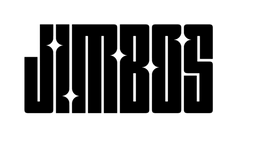How to Fix Deep Scratches Without Repainting
Got a deep scratch that makes your heart sink? Don’t panic — in many cases, you can fix deep paint scratches without repainting by carefully leveling and polishing the damaged area. In this guide, you’ll learn a professional yet safe approach to removing or minimizing deep scratches using Picture Perfect Polish.
Estimated Reading Time: ~10 minutes
Understanding Deep Scratches
Not all scratches are created equal. To fix them effectively, you first need to know how deep they go. Automotive paint consists of three main layers: clear coat, basecoat, and primer. Light scratches usually only affect the clear coat, while deeper ones may reach the basecoat or even the primer.
The rule of thumb: if your fingernail catches in the scratch, it’s deeper than the clear coat. But that doesn’t always mean it’s unfixable — you can often minimize its appearance dramatically with proper wet sanding and polishing.
What You’ll Need
- Picture Perfect Polish
- Dual-action polisher or hand applicator
- 1500–3000 grit sandpaper or sanding discs
- Spray bottle with soapy water
- Microfiber towels (Everyday Microfiber)
- Masking tape
- Lighting or inspection lamp
Step-by-Step: How to Fix Deep Scratches
Step 1: Clean and Inspect the Area
Wash the area thoroughly with The Super Soaper to remove dirt, wax, and contaminants. Dry it with a clean microfiber towel and inspect under bright light to confirm the depth and length of the scratch.
Step 2: Mask the Surrounding Paint
Use painter’s tape to mask off the area around the scratch. This keeps your sanding focused and prevents accidentally dulling nearby paint.
Step 3: Wet Sand the Scratch (if needed)
If the scratch is deep enough to catch a nail but not down to primer, lightly wet sand it with 2000–3000 grit paper. Keep the surface lubricated with soapy water and use light, even pressure in short strokes along the length of the scratch. Your goal is to level the edges of the scratch, not completely remove it.
Step 4: Polish to Restore Clarity
After sanding, the area will appear hazy or dull — that’s normal. Apply a small amount of Picture Perfect Polish to a foam or microfiber pad and polish the area slowly. Use overlapping passes until the haze disappears and the gloss returns.
Step 5: Inspect and Refine
Wipe the area clean with a microfiber towel. Under good lighting, you should see a dramatic reduction in the scratch’s visibility — often 80–90% improvement or better. If necessary, repeat polishing for maximum clarity.
Step 6: Protect the Area
Seal your work with Tough As Shell. It creates a slick, protective layer that repels water and UV rays, preventing oxidation and new scratches from forming.
Polish Away the Damage
Picture Perfect Polish removes sanding marks and deep scratches safely — delivering high cut and mirror-like gloss in one step.
Shop Picture Perfect Polish Buy on AmazonBefore & After Scratch Correction
| Condition | Before | After Using Picture Perfect Polish |
|---|---|---|
| Deep Clear Coat Scratch | Visible white line, dull area | Smooth, clear, 90% reduced |
| Wet Sanded Section | Hazy, dull from sanding | Gloss restored, scratch leveled |
| Edge of Scratch | Noticeable light refraction | Even reflection, no distortion |
Tips for Safe Scratch Repair
- → Always test on a small area before sanding.
- → Never dry sand — keep the area lubricated with water.
- → Stop if primer or metal shows through — that requires touch-up paint.
- → Use Picture Perfect Polish with a foam pad for refined, hologram-free finishing.
- → Protect immediately with Tough As Shell to preserve your correction work.
Seal and Protect Your Work
Tough As Shell ceramic spray protects repaired areas from oxidation, UV damage, and new scratches — while adding extreme gloss.
Shop Tough As Shell Buy on AmazonAlternative Methods for Minor Damage
- Touch-Up Paint: For deep gouges into primer or metal, touch-up paint followed by light wet sanding and Picture Perfect Polish can blend the repair.
- Scratch Fillers: Quick but temporary — they mask defects without removing them.
- Professional Repaint: Required if damage reaches the substrate or covers large areas.
Related Reading
- The Science of Paint Defects: What You’re Really Removing
- Wet Sanding vs Polishing — What’s the Difference?
- How to Remove Holograms After Polishing
- How to Measure Paint Thickness Before Polishing
- How to Protect Polished Paint for Maximum Longevity
FAQs
Can I fix a scratch that went through the clear coat?
If it hasn’t hit the primer or metal, yes — light wet sanding followed by polishing can minimize or remove it.
How do I know if a scratch is too deep to fix?
If your fingernail catches and you see a white or gray line, it’s at least through the clear coat. If you see a different color underneath, that’s primer — you’ll need touch-up paint.
Is wet sanding safe for beginners?
Yes, if done carefully. Always use high-grit paper (2000–3000) and keep the surface lubricated. Don’t stay in one spot too long.
Can I fix scratches by hand?
You can polish by hand using Picture Perfect Polish, but deep defects respond best to machine polishing for consistency and control.
Will the scratch come back?
No, once properly leveled and sealed, the scratch is permanently removed unless new damage occurs.



